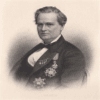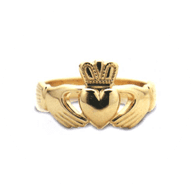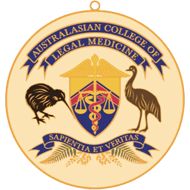Surgical Experimentation by the 'Father of Gynaecology' on African American Slaves
)
In the last three years the reputation of the pioneering gynaecologist J Marion Sims has been questioned by a scandal over experimental surgery on African American slave women. Sims was attempting to find a surgical cure for vesico-vaginal fistulae - an obstetric injury resulting from bladder damage after obstructed labour. His statue was removed from Central Park, New York in 2018 in deference to the public outcry regarding his racist behaviour.
A debate has raged over failures of consent for up to 30 procedures on a single patient which were performed without anaesthesia on vulnerable young slave-women. However, this may be an example of 'presentism' whereby the' beliefs, attitudes and practices of the 21st century is anachronistically projected retrograde to the early 19th century'.
Sims developed a very successful surgical practice in Montgomery Alabama over 13 years from 1840.
Vesico-Vaginal Fistulas
Sim's interest in vesico-vaginal fistulae was aroused by the vesico-vaginal and recto-vaginal fistulae sustained by Anarcha Westcott whom he delivered himself with forceps. He was further encouraged by his experience with a woman 'of keen sensibilities so afflicted and excluded from all social enjoyment' who 'pined away and died on ascertaining that she was hopelessly incurable'. It was not uncommon for women to suicide because of the lack of any prospect of cure.
Sims had no formal training in surgery when he graduated and no gynaecological training before he commenced practice in Alabama. His medical school training comprised 2 years of didactic instruction in South Carolina College followed by a year at Jefferson Medical College in Philadelphia. The first patient selected by Sims was a young teenage black slave, Lucy, who was positioned prone on her hands and knees and awake for the whole hour-long procedure. The second subject was Anarcha Westcott, upon whom he performed 30 operations on her bladder, vagina and rectum over 4 years without anaesthesia.
Sim's early attempts to close the fistulae failed but he eventually succeeded by excising the edges widely and then closing the defect with a silver wire thread anchored with lead ball bearings. Postoperatively their bladders were drained with an indwelling catheter to allow healing of the collapsed bladder. The first 3 patients together received over 40 operations. In total, seven black slave women were allegedly cured having each received multiple fistula surgeries without any anaesthesia. Later Sims offered his fistula operation to desperate white patients, again without adequate anaesthesia but only one could endure the surgery because of lack of anaesthesia. Sims published his results in 1852 but did not reveal his failure rate or complications. It is known that one attempt to staunch the flow of urine through Lucy's bladder fistula by inserting a sponge resulted in excruciating pain when he tried to retrieve it from the bladder and urethra and she later developed life-threatening sepsis.
Sims claimed 3 innovations: a) the Sim's position for patients undergoing surgery b) the use of silver wire sutures to close the fistula and c) the invention of a self-retaining urinary catheter for postoperative bladder drainage.
Later he enlisted the services of fellow black slaves to act as his surgical assistants. Sims asserted that all 7 black slaves had freely given their consent for the surgery. Writing in the New York Medical Gazette and Journal of Health in 1855 Sims said of his treatment of 3 black slaves with V/V fistulae:
'I was fortunate in having three young healthy coloured girls given to me by their owners in Alabama, I agreeing to perform no operation without the full consent of the patients and never to perform any that would, in my judgement jeopardy life or produce greater mischief on the injured organs - the owner agreeing to let me keep them (at my own expense) till I was thoroughly convinced whether the affection could be cured or not'
John Marion Sims

Dr JM Sims 1813-1883
Surgery without Adequate Facilities & Equipment
In Sim's small backyard hospital in Montgomery, Alabama he was reliant in the operating room on natural light reflected by mirrors into the exposed vagina of his patients. Thomas Edison only patented his electric light bulb in 1879. The advice of Schuppert in 1866 was to operate on a sunny day! Suture materials in the 1840's consisted of gut or silk on reusable needles. However, suture material was not sterilised until after Lord Lister introduced carbolic antiseptics (phenol) in 1860. Sims was using silk sutures to close the fistulae but found that these 'cut out' before the fistulae healed. He turned to silver wire sourced from a local jeweller.
Anaesthesia was virtually non-existent in the 1840's, ether having been introduced in 1842 in Georgia but not reported by Crawford Long until 1848. William G Morton and Warren performed the first publicised operation under ether on October 16, 1846 in Massachusetts.
During the American Civil War from 1861-1865 chloroform was used in almost 80,000 cases due to its rapid action. In 1866 Schuppert claimed that the repair of a V/V fistula was not a painful operation with some of his 17 patients having experienced no pain however he did routinely offer a chloroform anaesthetic. The only available agents for surgical operations in the early 1840's were opiates including a tincture of opium called laudanum, alcohol and Mandrake - an Arabic hallucinogen. Halstead in Los Angeles used the local anaesthetic cocaine applied first to the eye in 1884 and later to the exposed cervical nerve plexus for breast and arm surgery. Nitrous oxide was used especially for dental surgery from December 1844 by Horace Wells but a later demonstration of nitrous oxide's anaesthetic properties in Boston was less impressive and its adoption for use in anaesthesia was delayed.
Sim's operating table was a small wooden static structure 4 feet in height and 2.5 feet wide. His instruments were self- constructed such as the pewter prototype Sim's speculum. The patient's position was prone on all fours or later in a left lateral Sim's position. The surgical assistants were initially other doctors or later fellow patients. No suitable antibiotics had yet been discovered until Prontosyl® was synthesised in 1935. However Schuppert removed the silver indwelling catheter twice a day and cleaned them with a solution of nitric acid before reinserting them.
Sims claimed that all seven of his first group of black slave women were eventually cured albeit with up to 30 operations although Sims did not report any failures in his paper in 1852. However Schuppert's series of 17 patients including 5 Negro slaves (the youngest of whom was aged 16 years); 3 Irish and 2 German women) had less success with 2 deaths from sepsis and a pulmonary embolus as well as at least one failure who menstruated per urethram post operatively. One patient was inadvertently pregnant at the time of surgery and later went on to a vaginal delivery without sustaining a recurrence of her fistula.
Slavery commenced in 1619 in Jamestown Virginia with the transportation of slaves and provided a cheap source of manual labour for the vast tobacco, cotton and sugar cane plantations in the Southern plantations for over 200 years. They were cheaper than indentured workers who migrated from Europe and who then returned when the economy of Great Britain and European states improved. Slaves formed the backbone of the agricultural workforce. Slaveholders examined women for their fertility and projected the value of their "future increase." They were subjected to restrictive codes of behaviour and were prohibited from learning to read or write and their movements were controlled by their owners. Dissent was brutally punished. Owners frequently exacted sexual favours from female slaves. Marriage between slaves was not legally recognised. However in the antebellum period the conditions of slaves improved as a result of the cessation of the Transatlantic Slave Trade by statute in 1808. This forced owners to rely on their existing slaves who were encouraged to procreate and so meet the increased demands of the labour market from within the US.
The principle of ownership of a slave was considered in March 1857 by the US Supreme Court in Dred Scott v. Sanford. The US Supreme Court held that Scott was not free because he was not considered a person under the U.S. Constitutionin the opinion of the justices, black people were not considered citizens when the Constitution was drafted in 1787. According to Taney J, Dred Scott was the property of his owner, and property could not be taken from a person without due process of law. If John Marion Sims had been charged during that era with either battery or medical negligence based on failure to gain informed consent from his seven black slave women then one possible defence would most have likely been that he had no more obligation to obtain consent from those slave women than if he were operating on a farm animal. These women were the property of plantation owners who could legally do with them as they pleased. They would not have been considered citizens of the US and as such would have had no rights under the US Constitution of 1787. Sims would have been very aware of that as he himself was a slave owner. He was to later extol the advantages of operating on patients who were his property as they provided an endless supply of surgical material!
Further Reading
- Sims JM. Treatment of Vesico-Vaginal Fistula 1852 American Journal of Medical Science 23:59-83
- de Costa, C M. "James Marion Sims: some speculations and a new position" 2003 The Medical Journal of Australia. 178: 660663
| Tags:MedicolegalObstetrcis |








